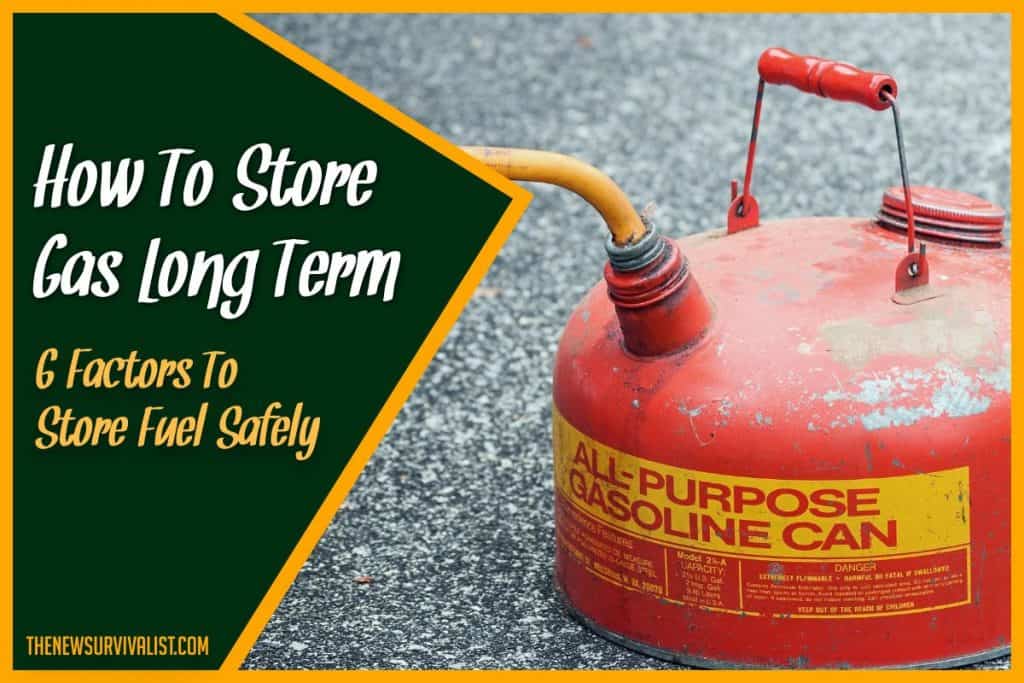Fuel is a very important part of our daily lives, especially when you’re living off grid. It’s not only powering your car but likely your entire household as well – from lights to microwaves and shower heating. When emergency situations strike, it’s best to be stocked and ready. Gas is a very volatile substance, and cursory preparations for safety are sorely needed to avoid the more common issues.
How to store gas long term? Long term gas storage needs proper containment – plastic and metal are fine, though the latter is ideal. Be wary of vapor spread, which can present both inhalation and ignition risk. In one to two months, gasoline may start to go bad due to factors such as water dilution, and even the container materials eventually end up compromised over time.
The first thing you’ll need are the right tools for the job, followed quickly by ways to keep those tools from obsoleting – or at least swap them out comfortably before that point.
How To Store Gas Long Term
Get Proper Containers
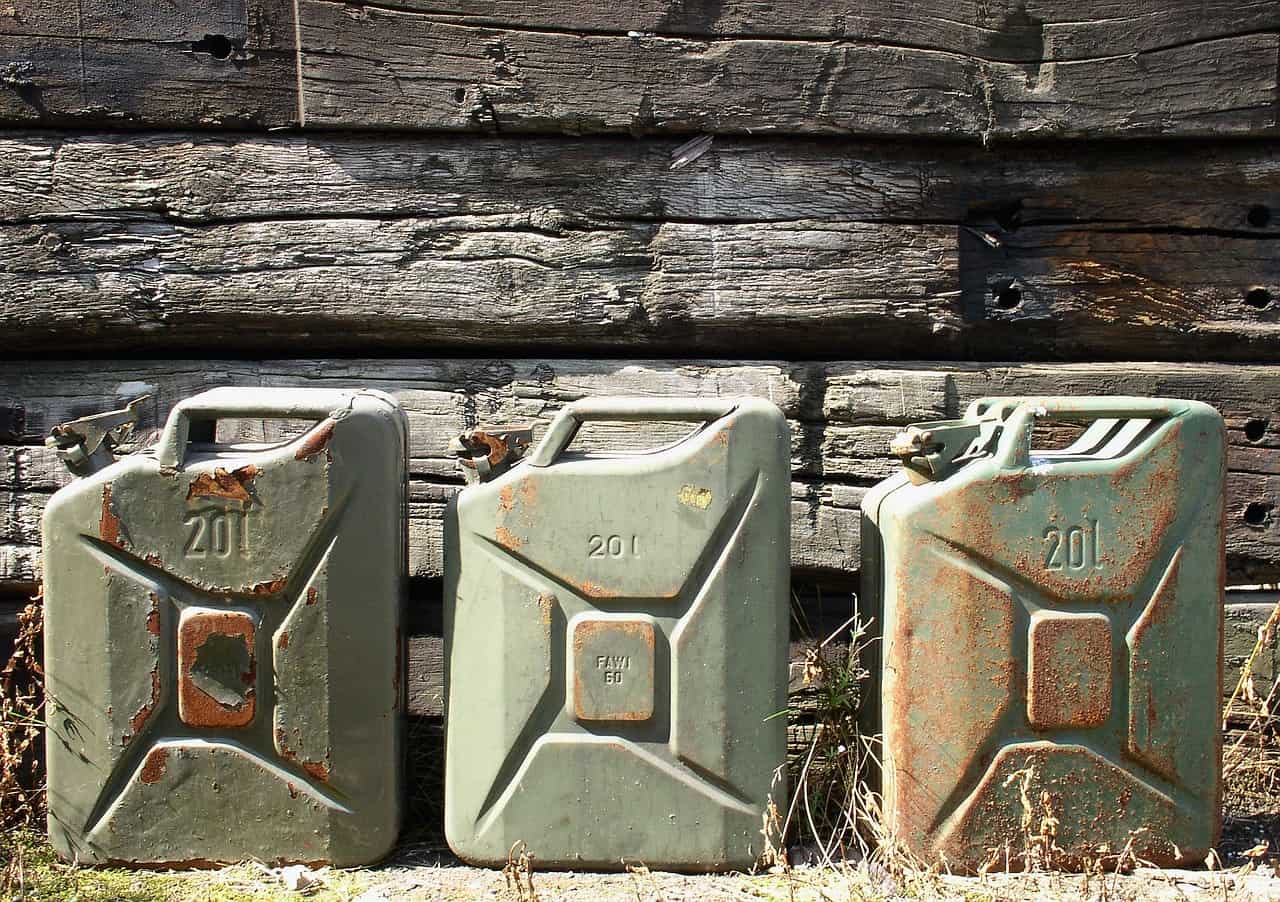
Dedicated fuel storage containers are pretty easy to come across, with one of the more common methods like the jerry can falling in the forty dollar range. When getting your containers, it’s important to look for manufacturer markings that indicate their safety standard compliance.
Another important consideration for pouring vessels is their funnel compatibility. If these fail to create full seals, fuel can spill out and vapors will leak into the air. At best this would contaminate fuel efficiency and make people in the area feel ill, and at worst could easily lead to bad chemical burns liable to spread.
One could also install a large, dedicated storage unit on their property. This way you could siphon off fuel only as needed, managing with smaller containers for regular daily usage.
Always ensure the tank you’re using has been safely approved by competent manufacturers. Label your container accordingly, and keep at least fifty feet away from any source of ignition or light.
Residential rules normally restrict gasoline storage to no more than 25 gallons. This makes for a decent supply given gasoline’s expected shelf life of three to six months. Past this point performance significantly degrades. Common problems from old gas include clogging injectors, stuttering engines, or unreliable generator usage, compromising your expensive hardware.
Another notable issue experienced by a lot of individuals is the common gas canister formats. New findings in the fuel canister industry seem to have regressed, with common complaints on the newer models being poor flow, fragile nozzles, or absence of fuel can vent for pouring.
Spillage is a very common complaint about this product line, despite all the innovative anti-spill measures allegedly introduced. The general consensus of the community using these is skewed heavily towards the older model fuel containers, what with their simpler designs and rugged reliability in comparison.
Make sure you check your state’s legislation before doing so, as regulations vary greatly. There’s a distinct possibility some older designs may even be illegal in your city, so make sure you read up before having to deal with that red tape.
Materials
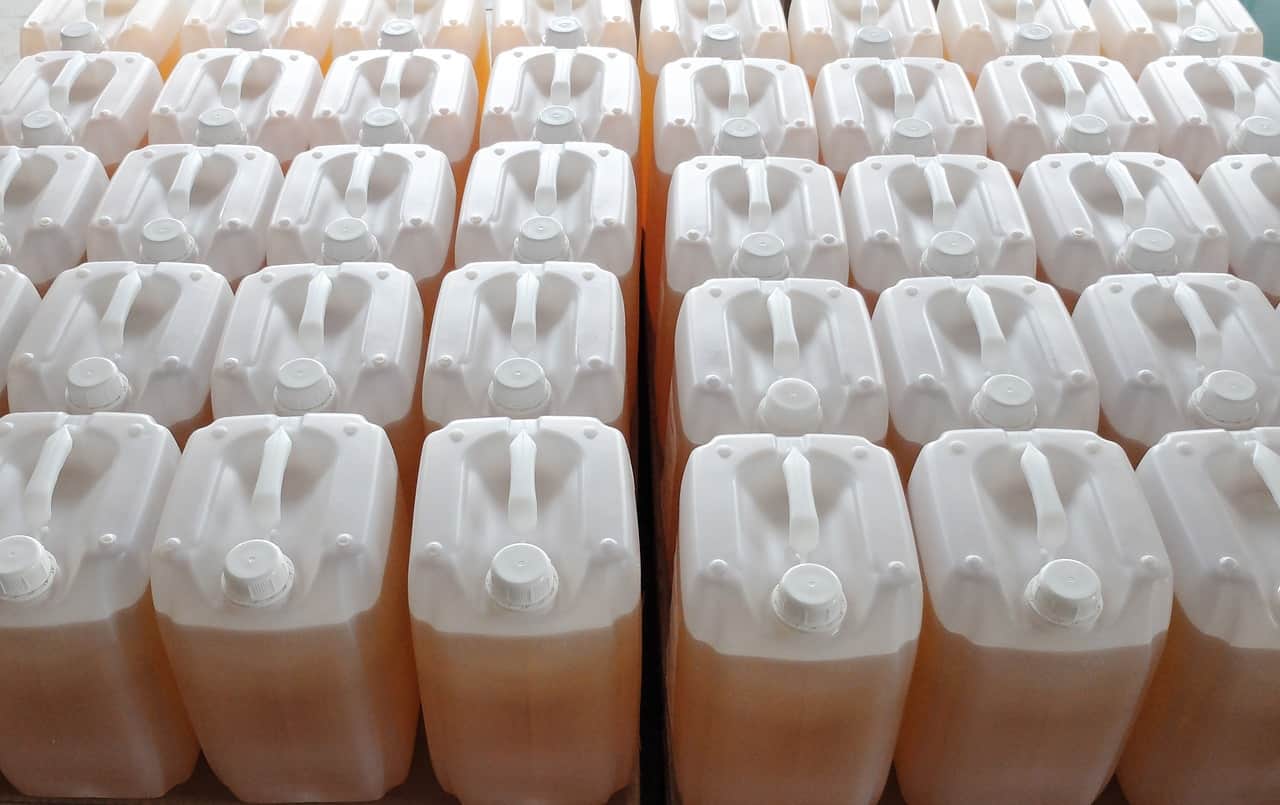
There are quite a few material types suitable for gas storage, each with its own set of pros and cons. Common factors include weight, price, corrosion resistance, recyclability, and pliability.
Plastic makes for a solid go-to option, being among the cheapest safe storage material in the market. They’re lightweight, less heat conducive than their counterparts, and any possible deformations in the material can be hammered out or patched quickly. They’re also safer in dire circumstances, only melting – steel drums explode in similar conditions.
A notable drawback to using plastics is their porous nature. This leads to them absorbing vapors within the gasoline, leading to structural compromises developing over time. While these concerns will be easy to fix for a time, eventually the entire container will obsolete from the exposure. Their exposure prevents them from being recyclable as well, unlike the rest of other materials below.
Steel can be considered a competitive option as well. In fact, jerry cans are often made from pressed steel and have developed a reliable reputation over time. Steel is also non-porous, so the fuel won’t cause any changes to your container.
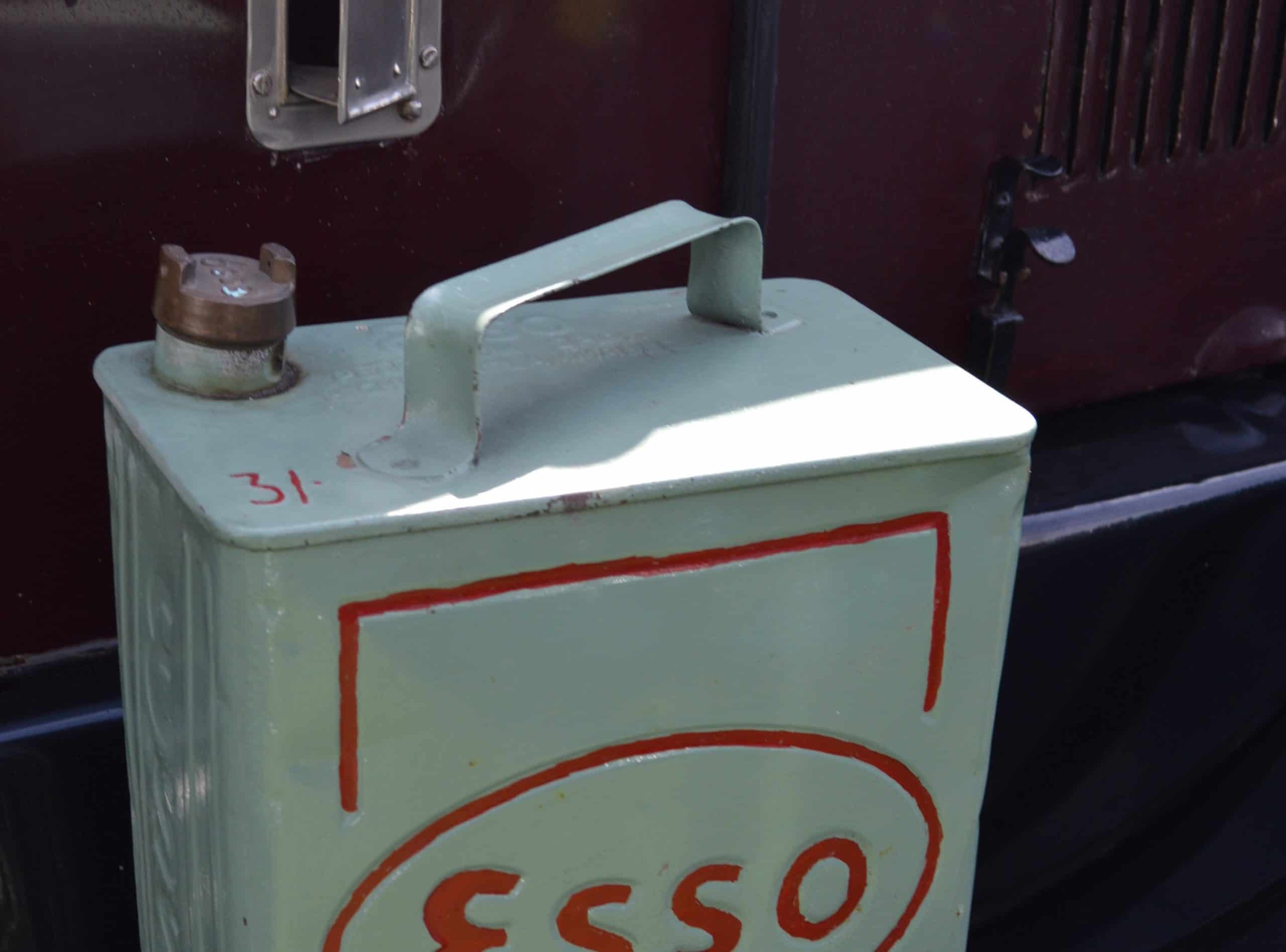
Unfortunately, the inverse isn’t true – rust developed from oxidation will restrict the fuel flow or cause engine issues. Gasoline consumption relies on a very specific ratio of fuel to air, and the addition of even slight contaminants like rust will detrimentally affect this specific reaction.
Another advantage is that steel is very durable, which prevents chip or scratch damage that other storage methods could suffer from. While container warping may lead to difficult or irreparable damage, it takes a long tenure or extreme usage to get to that point, and you could simply recycle the material to recoup some semblance of return.
Other industrially approved materials for gasoline are aluminum and fiberglass. These two strike a comfortable middle ground on corrosive resistance, weight, and durability, but the price of materials usually falls at least twice or thrice as expensive to comparative steel. Their cost may be prohibitively inaccessible for most normal budgets.
Seal
Gasoline’s volatility is due to its easily combustible nature and its quickness to vaporize. Any gaps within your storage unit are not only dangerous but difficult to detect.
A properly done seal often leads to the container swelling due to the trapped vapors. This isn’t a bad thing as is, and serves as an indication of how airtight the container is. When exposed to heat, however, it’s very possible for the container to swell further or even explode in certain conditions. This is a relatively common concern with steel containers, though usually harmless without heat.
Regardless of materials, ensure your container comes from a trusted brand that fulfills all health and safety regulations stipulated. Skimping on storage container price may lead to wasted fuel and further damages, often costing more than more expensive initial purchases.
Find a Good, Protected Spot For Them
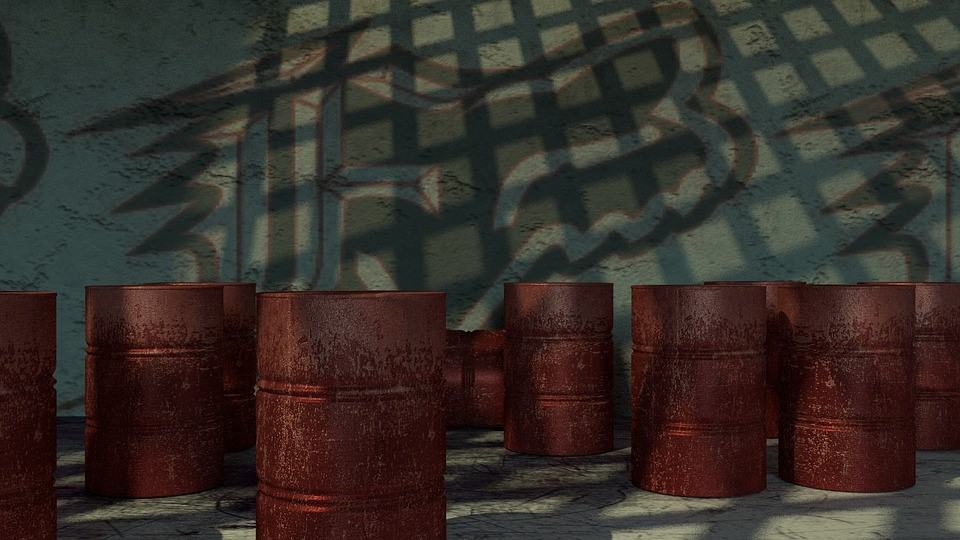
When you’re storing away your fuel containers, you want to steer far away from potential ignition or heat sources. As mentioned above, fifty feet or so in distance will suffice.
is comprised of hydrocarbons, which can seriously impair the functioning of your nervous system when inhaled. Common symptoms of gas inhalation include dizziness, shortness of breath, and general weakness. It could even lead to loss of consciousness and organ failure. Never store gasoline in your home – the vapors are far too dangerous, ignited or otherwise.
Storing gas containers necessitates someplace with good circulation. While vapors are a serious concern, open circulation allows you to identify leaks quicker and prevent dangerous gas pockets from turning explosive. Basements and other underground storage areas planned should be reconsidered, as gas could easily end up trapped without anyone aware.
The necessity of light sources in underground areas also leads to more potential sources of ignition. Aim for somewhere above ground, preferably somewhere ambient lighting can suffice for most of the day. It’s important to note that gasoline vapor is heavier than ambient air, and travels low to the ground and may be difficult to discern.
To recap, avoid sources of electricity, ignition, sparks, or even just warmth. Gasoline is volatile enough to combust at the drop of a hat, so bear that in mind.
The ideal storage location would be somewhere far from your living vicinity but sheltered from the elements. Large, above ground buildings like barns or sheds can do well for this purpose. Another option is purpose designing an enclosed cabinet to accommodate your fuel storage needs.
Check For Vessel or Fuel Degradation
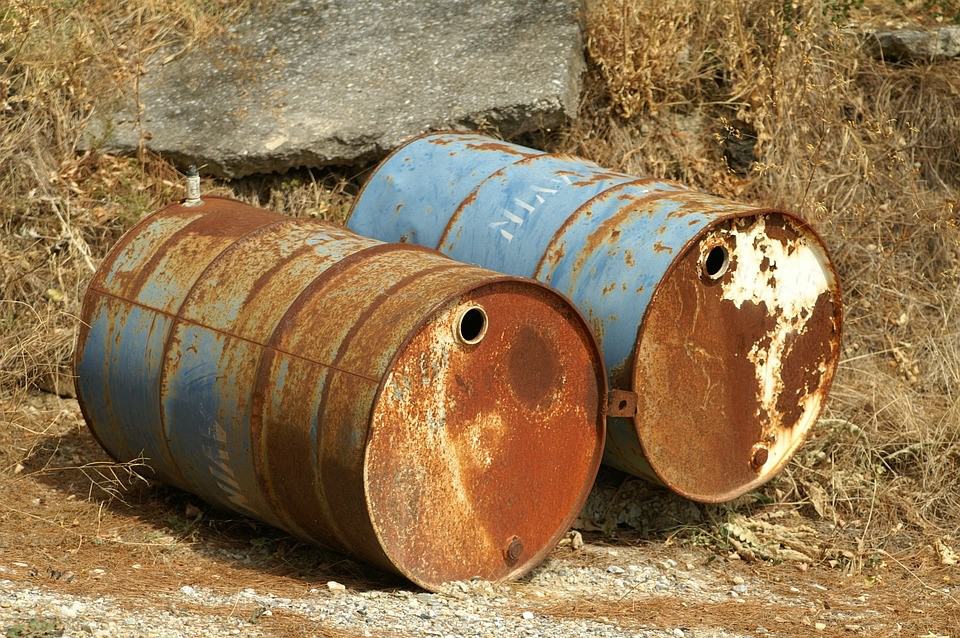
Plastic and Metal storage containers degrade in different ways.
Plastic containers get structurally compromised over time due to being made of hydrocarbons just like gasoline. Like ends up dissolving like, and using plastic storage necessitates more replacement containers. In damaged conditions, plastic containers will melt alongside their contents.
They are also more susceptible to wear and tear. Coupled with the effects of gasoline on their soundness, it’s prudent to always check for cracks and indents in your plastic storage containers. Try to check for damages every couple of months at a minimum.
Steel is quite resistant to those issues but can compromise the fuel itself. Rust can build up on steel in around a week or two. This is further exacerbated by heat and moisture, not helped by how well steel conducts heat. As mentioned before, rust contaminating your gasoline will damage engines and generators.
For longer storage, steel drums are safer. Rust is relatively easy to handle with regular maintenance scheduled, while plastic degradation can’t be handled other than via full replacement of the unit. Even rare instances where the steel barrel can’t be used as is can be circumvented by recycling the metal used.
Be Wary of Water Dilution Over Time
Water dilution can be introduced from something as simple as humidity and can lead to a damaging process called phase separation. This situation occurs due to the presence of ethanol in gasoline. Water introduced attaches to the ethanol molecules, and they end up sinking to the bottom of the container.

This produces two layers – the original gas layer, and the water-ethanol hybrid at the bottom. Engines and generators can accommodate the former layer just fine, though the latter ends up causing significant mechanical damages in the engine of vehicles. Due to the top layer’s initial appearance, this problem is difficult to discover without specifically checking for it.
Try to minimize humidity in your storage area to prevent rust and phase separation concerns. One could keep plants in their storage area. They also happen to function as early warning indicators for gasoline vapor leaks, as exposure to such asphyxiates their roots, leading to easy to detect discoloration and rot.
Make Use of Fuel Stabilizers
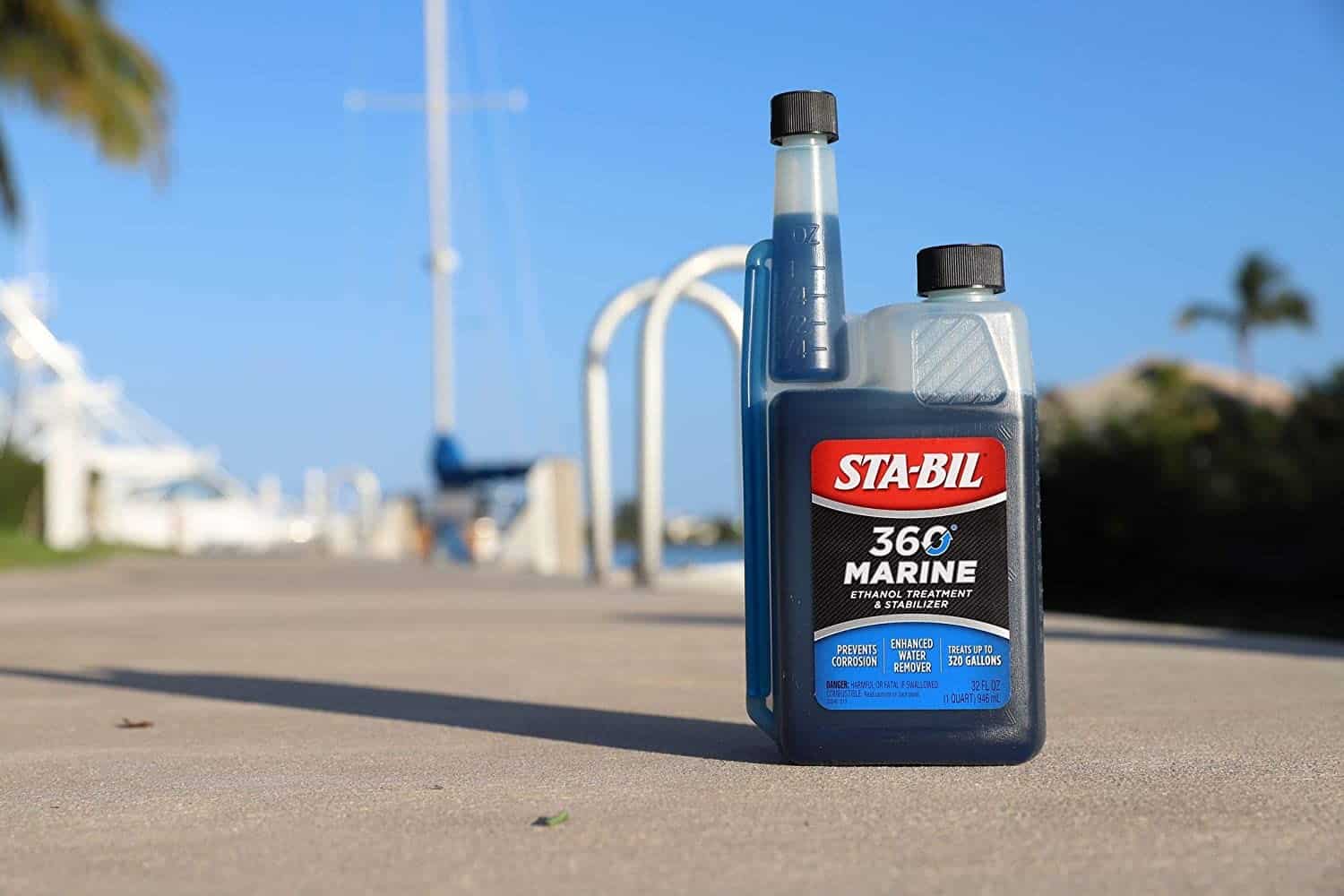
While the initial shelf life of gasoline is relatively limited, there are products in the market that can greatly extend their potency. Fuel stabilizers are meant to reduce moisture build up, evaporation, and varnish residue. These can extend your gasoline’s shelf life from six months to two years.
When applying fuel stabilizers, make sure you pick out the proper product for gasoline. Some variants only work on diesel, and applying them could lead to all sorts of engine complications you tried to avoid.
Apply fuel stabilizers only when you’re using your gasoline. Directions on the procedure will always be provided, and usually, only require modest quantities for the amount of fuel you’d reinvigorate. One of the more renown brands among thousands of users are the STA-BIL product line, and can be purchased on Amazon here.
Engines with carburetors especially require this when handling old gasoline. Evaporation over time turns your fuel much thicker, especially over years of storage. Adding a fuel stabilizer rejuvenates it into something that most engines can easily accommodate.
(Or) Rotate Your Gasoline Stock
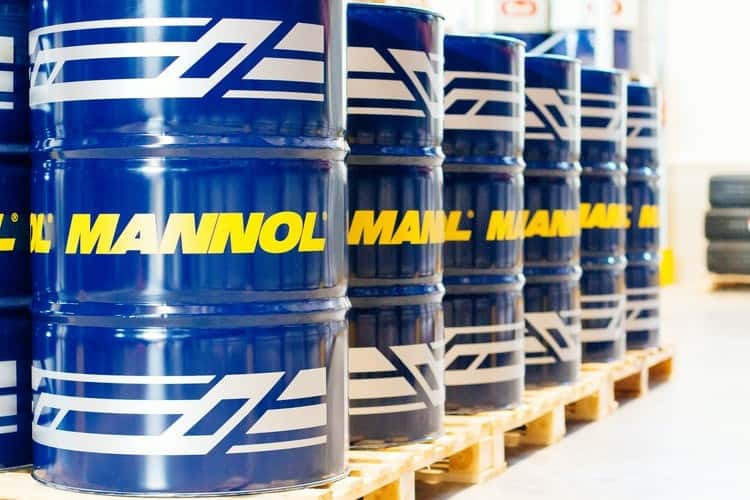
If you aren’t a fan of using additives or other hardcore dedicated storage means, simply rotating your gasoline stock should do the job just fine. Gas as is lasts about half a year before its quality begins to seriously decline, and given the expected 25 gallon limit most counties subscribe to you’ll likely burn through most of that over the course of your day to day living.
Simply label your main storage options to indicate the order of purchase, then go through the tanks accordingly starting with the oldest tank you have. If you’re just living off grid, normal gasoline’s shelf life of three to six months should last you comfortably without any additives.
Even minor emergencies usually sort in in about two months’ time at best, so unless societal collapse is on the horizon simply rotating your gasoline cache by purchase order will be more than sufficient. That said, don’t just write off the possibility – maybe keep some bug out plans tucked away in your back pocket just to be on the safe side.
Final Thoughts
Gas is one of the harder fuel types to store, having a shorter shelf life and greater volatility than most of their competitor fuels. If you’re up to the task, gas makes for a great fuel that can last as long as you need it to. Most of their safety precautions are shared with other fuel types – it’s just the level of danger that differs. Just find the right tools and be cautious with your handling.

